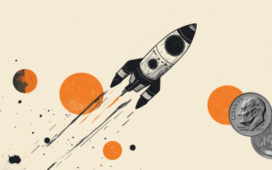Let’s talk exchange rates. First, there’s an official exchange rate in Argentina, the sort of exchange rate you’re used to. If you use Google as your currency converter – searching, say, “1 AUD in Argentinian pesos” – you will get this official exchange rate, which is the one quoted above, $1 to 768 pesos.
If you withdraw cash from an ATM in Argentina, that withdrawal will be calculated using this official exchange rate. So far, so normal.

Cash is common in Argentina, but you’re better off paying by card.Credit: Bloomberg
Then, however, there’s the credit card exchange rate. If you pay electronically in Argentina, using your credit or debit card, that payment will be calculated at a different exchange rate to the official rate, one that’s advantageous to foreign visitors, who are being discouraged from using cash (which is in short supply in Argentina).
For example, I ate a meal at a Buenos Aires parrilla recently, and the bill came to 73,500 pesos. If I had paid that in cash that I had withdrawn from an ATM, the meal, at the time, would have cost me about $A122. Instead, I used a Visa debit card, and the meal came to about $A101.
So, you use your cards as much as possible, right? Yes, except there’s a third exchange rate, known as the “Blue Dollar”.
Argentinians, understandably, are keen to convert their pesos into stable American dollars, which means those hard-currency American bucks are highly sought after.
Loading
So, if you exchange American dollars in cash for Argentinian pesos, you will get the Blue Dollar rate, which is much better than the official exchange rate, and slightly better than the credit card rate. (You’ll also get a better rate for exchanging $US100 bills than you will smaller notes.)
That meal of mine at the Buenos Aires parrilla, spending pesos exchanged for American dollars, would have cost me about $A96.
Blue Dollar exchanges can be done at unofficial exchange “cambio” shops often found in tourist-heavy areas of Buenos Aires and other major cities. This Blue Dollar market is tolerated, if not exactly legal.
The question then is, what should visitors to Argentina do for money?
Loading
First piece of advice: don’t rely on local ATMs to withdraw cash. That’s not just because you will get the worst exchange rate, but because Argentinian ATMs have very low withdrawal limits, and high fees, making this way of sourcing cash highly unattractive.
There’s a problem with the Blue Dollar rate too, for Australians at least, and that’s that you will need to buy those US dollars in the first place. Plenty of Australian exchange outlets, particularly at airports, offer terrible exchange rates on top of charging commissions, which means you’re not going to be saving much, if anything, by getting the Blue Dollar rate in Argentina.
The sweet spot for Australian travellers is to rely mostly on credit and debit card payments, which are widely accepted in Argentina, and to take a small amount of US dollars – say, $US100 per person per week – to exchange on the Blue Dollar market and use for cash-only payments such as tips in restaurants and taxis (though Uber is also available in large cities).
Bear in mind, too, that any pesos you have leftover at the end of your trip will be worthless outside Argentina, and impossible to exchange, so don’t change large amounts of money you can’t spend.
It almost makes you long for travellers’ cheques.
Exchange rates correct at the time of publishing, they’re subject to fluctuations without notice.


